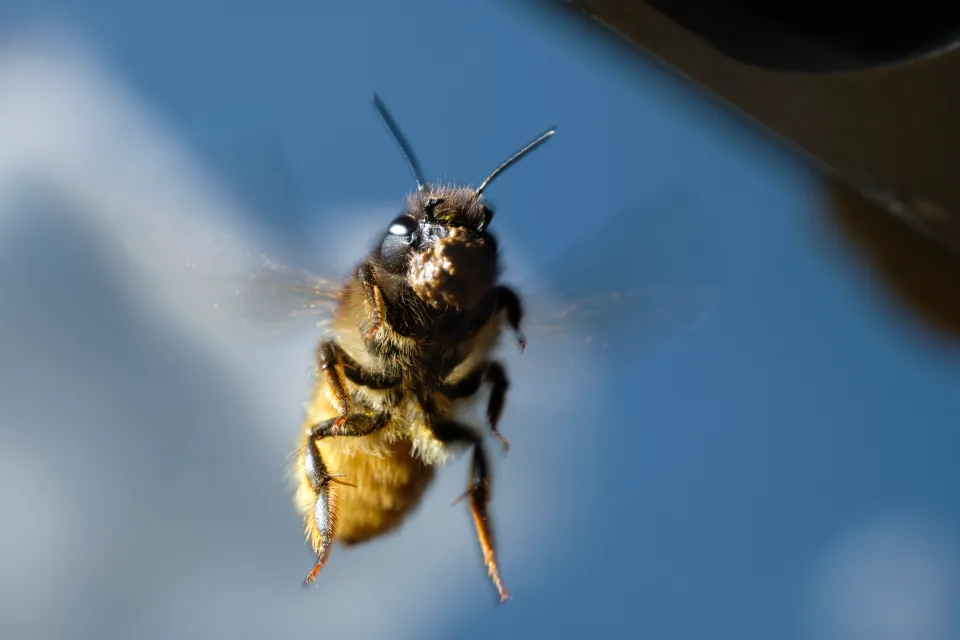Chinese scientists have created the world’s largest brain controller, with which bees can be flown like robots.
Scientists at the Beijing Institute of Technology have achieved a remarkable milestone by creating the lightest insect brain controller ever built, weighing merely 74 milligrams. This groundbreaking device has the potential to transform how insects like bees are used in various fields, from military operations to disaster rescue missions.
Developed by a dedicated team led by Professor Zhao Jieliang, the miniature brain controller is strapped onto a bee’s back and features three ultra-fine needles that penetrate the insect’s brain tissue.
These needles transmit electronic signals that influence the bee’s neural activity, effectively allowing scientists to direct its flight—whether to turn left, right, move forward, or retreat. In controlled experiments, bees successfully followed commands in approximately 90% of attempts.
The device manipulates the bee’s perception by creating illusions in its brain, making it believe it is acting independently. This method grants precise control over the insect’s movements without physically restraining it. Professor Zhao emphasized that these insect cyborgs outperform small robotic devices in terms of agility, stealth, and endurance, making them invaluable for complex tasks.
Potential Applications in Defense and Emergency Response:
Professor Zhao highlighted several promising uses for these bee cyborgs, including covert military reconnaissance, counterterrorism operations, and search-and-rescue missions in disaster-stricken environments. Due to their small size, rapid movements, and ability to access confined or hazardous areas, bees controlled by these devices could outperform traditional drones or human responders in urban warfare or collapsed structures.
This innovation draws inspiration from earlier research in Singapore, where researchers controlled beetles and cockroaches for similar purposes. Notably, China’s version surpasses these earlier models, being three times lighter—an advancement that enhances flight time and maneuverability.
Challenges Ahead and Future Directions:
Despite the promising progress, several hurdles remain. One major issue is battery life; the current power source is too small to sustain long-term operation, and larger batteries would add undesirable weight. Additionally, adapting the device for different insect species requires adjustments, as each species’ neural responses vary.
Professor Zhao’s team aims to enhance the intelligence of the signals sent to the insects, making the control more precise and reliable. Future research will focus on developing smarter, more adaptive control systems and improving energy efficiency to extend operational periods.





















